Apple Vision Pro: price, release year, and everything we know about the VR headset
The Apple Vision Pro is one of the biggest tech announcements of recent years – and while the dust has settled on the tech giant’s first AR/VR headset, many questions remain. When’s the Vision Pro coming out? How much does it cost? What do we know about its specs? And how will you use it if you wear glasses?
– Mixed reality headset
– Dual M2 and R1 chip setup
– 4K resolution per eye
– No controllers, uses hand tracking and voice inputs
– External battery pack
– Two-hour battery life
– Starts at $3,499 (around £2,800 / AU$5,300)
– Runs on visionOS
We’ve rounded up the answers to those questions and more in this guide to everything we know (so far) about the Apple Vision Pro. You can also read our hands-on Apple Vision Pro review for a more experiential sense of what it’s like to wear the headset.
Now that visionOS (the headset’s operating system) is in the hands of developers, and Vision Pro developer kits loans are starting to be sent out we might soon learn more about the headset. That is if the lucky developers with a kit are willing to go against their agreement with Apple and share details of the hardware they’ve been sent.
Apple Vision Pro latest news
- August 8, 2023: the tvOS 17 beta has seemingly leaked that the Vision Pro battery is called the Magic Battery instead of MagSafe Battery, suggesting the battery won’t use the magnetic charging tech found in other Apple products.
- July 27, 2023: the second Vision OS beta has revealed that some minor features like the ability to install apps from your iPhone, and a hand pointer to help with accessibility.
- July 24, 2023: Apple is beginning the process of loaning out developer kits of the Vision Pro.
- July 7, 2023: you might struggle to get your hands on the Apple Vision Pro as Apple may only be able to manufacture 150,000 of them in 2024.
- June 22, 2023: the Apple visionOS beta is now out in the wild with developers, and it’s taught us six things about the AR/VR headset.
- June 22, 2023: a new report from The Information suggests Apple had planned to include more features in its Vision Pro unveiling, but left five key ones out as they weren’t yet ready for primetime.
- June 19, 2023: the iPhone 15 is tipped to have a UWB (Ultra Wideband) chip, which could help unlock the Apple Vision Pro’s potential.
- June 12, 2023: according to Bloomberg’s Mark Gurman Apple is already working on two Vision Pro successors, including a cheaper one. Though the latter isn’t slated to arrive until the end of 2025.
- June 8, 2023: some new speculation has hinted at how expensive the Vision Pro’s ‘vision correction accessories’ could be for glasses-wearers. The short answer: you’re looking at “$300-600 a pair” for the Zeiss prescription lenses. Ouch.
- June 7, 2023: all of the early verdicts on the Apple Vision Pro are in from those lucky enough to try it out at Apple Park (including TechRadar). Our Vision Pro review roundup gives you an early temperature check of everyone’s early thoughts.
Apple Vision Pro: what you need to know
Vision Pro release date: Sometime “early next year” according to Apple.
Vision Pro headset price: Starts at $3,499 (around £2,800 / AU$5,300).
Vision Pro headset specs: Apple’s headset uses two chipsets, an M2 and a new R1 to handle regular software and its XR capabilities respectively. It also has dual 4K displays.
Vision Pro headset design: The Vision Pro has a similar design to other VR headsets, with a front panel that covers your eyes, and an elastic strap. One change from the norm is that it has an outer display to show the wearer’s eyes.
Vision Pro headset battery life: It lasts for up to two hours on a full charge using the official external battery pack.
Vision Pro headset controllers: There are no controllers – instead you’ll use your eyes, hands, and voice to control its visionOS software.
Apple Vision Pro: price and release date
Apple says the Vision Pro will “start” at $3,499 (that’s around £2,800 / AU$5,300). That wording suggests that more expensive options will be available, but right now we don’t know what those higher-priced headsets might offer over the standard model.
As for release date for the Vision Pro, Apple has only given a vague “early next year.” That’s later than we’d been expecting, with leaks suggesting it would launch in the next few months – perhaps around the same time as the iPhone 15 – but that isn’t the case. As 2024 gets closer we expect Apple will give us an update on when we’ll be able to strap a Vision Pro onto our heads.
Interestingly, Apple’s website only mentions a US release. Apple has yet to confirm if the Vision Pro will launch in regions outside of the US, and when that’ll happen. Even if it does launch outside of the US you might struggle to get your hands on one; Apple is reportedly going to make less than 400,000 Vision Pros and maybe even as few as 150,000.
Apple Vision Pro: design
The Apple Vision shares a lot of similarities with the current crop of best VR headsets. It has a large face panel that covers your eyes, and is secured to your head with a strap made from elasticated fabric, plastic and padding.
But rather than the similarities, let’s focus on the Vision Pro’s unique design features.
The biggest difference VR veterans will notice is that the Vision Pro doesn’t have a battery; instead, it relies on an external battery pack. This is a sort of evolution of the HTC Vive XR Elite’s design, which allowed the headset to go from being a headset with a battery in its strap to a battery-less pair of glasses that relies on external power.
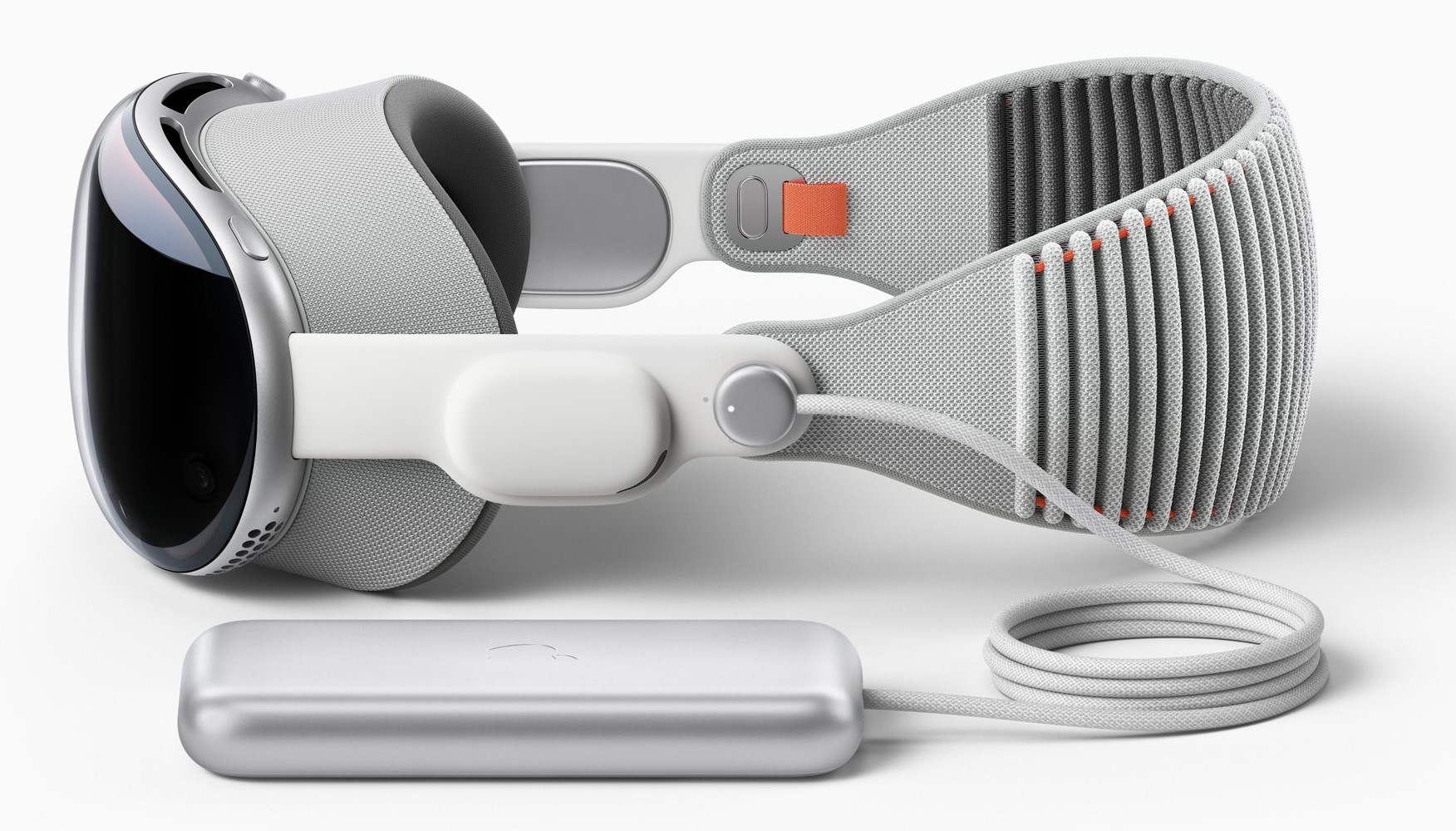
This battery pack will provide roughly two hours of use on a full charge according to Apple, and is small enough to fit in the wearer’s pocket. It’ll connect to the headset via a cable, which is a tad unseemly by Apple’s usual design standards, but what this choice lacks in style it should make up for in comfort.
We found the Meta Quest Pro to be really comfy, but wearing it for extended periods of time can put a strain on your neck – just ask our writer who wore the Quest Pro for work for a whole week.
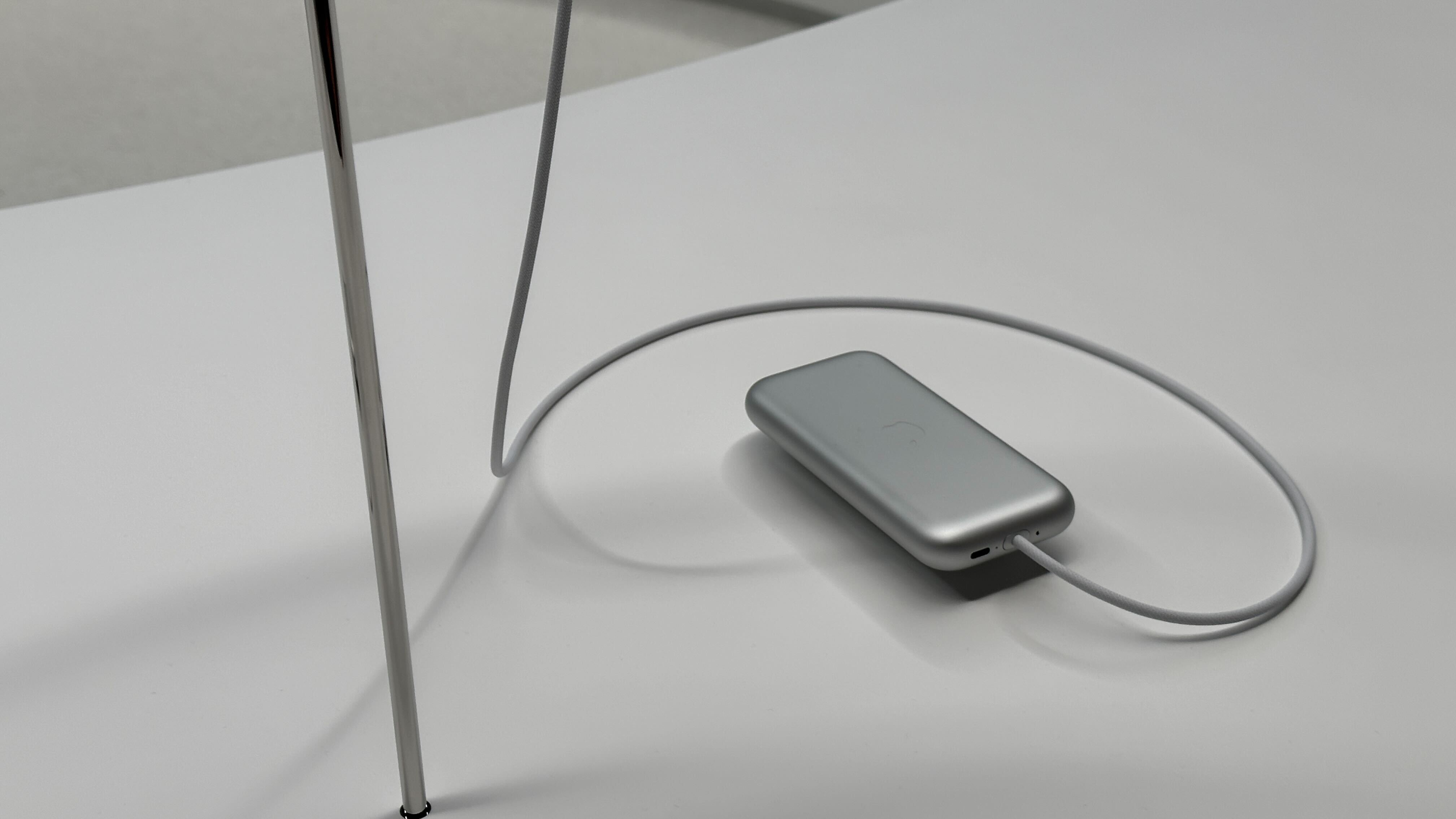
If you buy a Vision Pro you’ll find that your box lacks something needed for other VR headsets: controllers. That’s because the Vision Pro relies solely on tracking your hand and eye movements, as well as voice inputs, to control its apps and experiences. It’ll pick up these inputs using its array of 12 cameras, five sensors, and six microphones.
The last design detail of note is the Vision Pro’s Eyesight display. It looks pretty odd, maybe even a bit creepy, but we’re reserving judgment until we’ve had a chance to try it out.
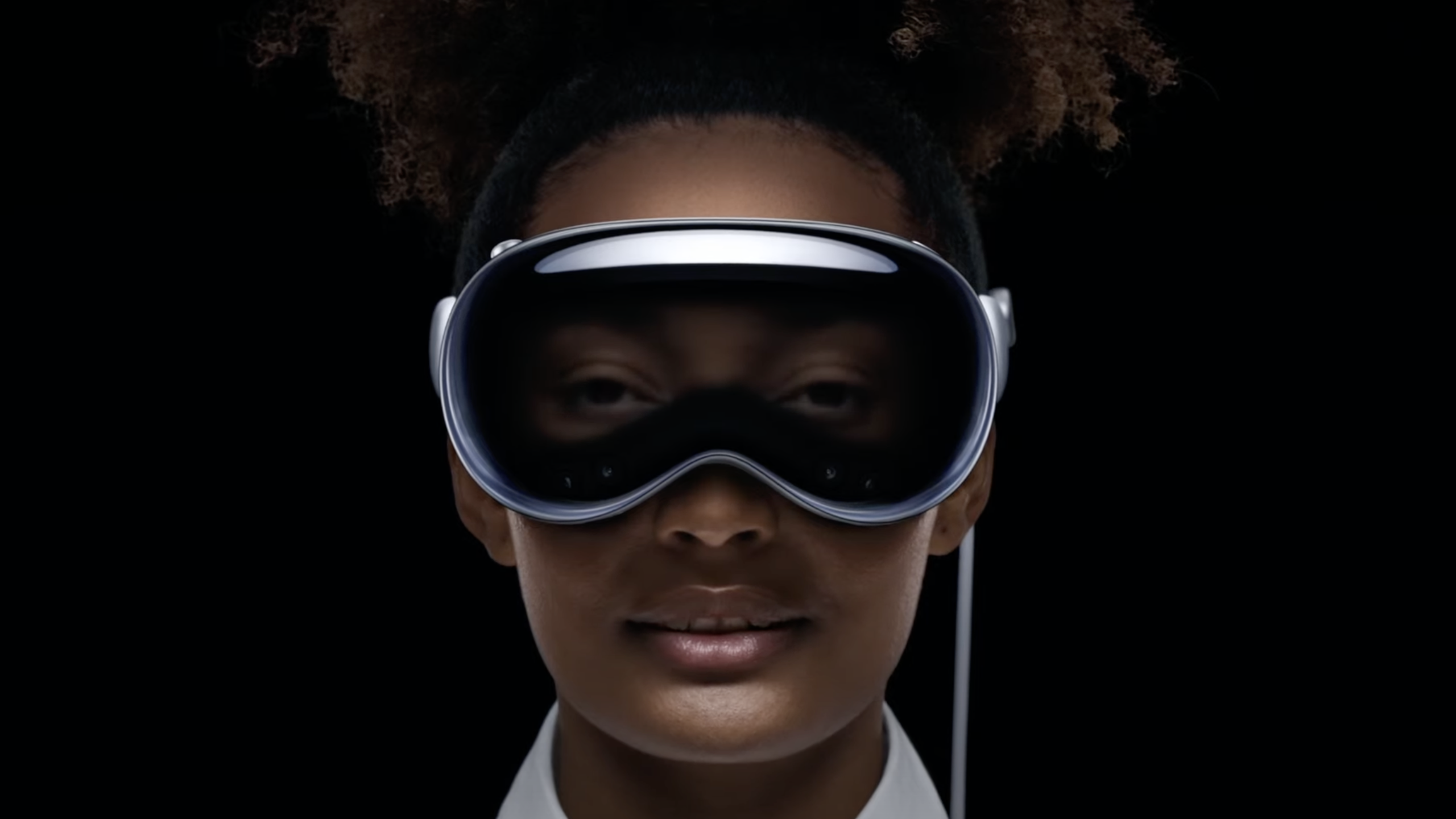
When a Vision Pro wearer is using AR features and can see the real world, nearby people will see their eyes ‘through’ the headset’s front panel (it’s actually a screen showing a camera view of the eyes, but based on Apple’s images you might be convinced it’s a simple plane of glass). If they’re fully immersed in an experience, onlookers will instead see a cloud of color to signify that they’re exploring another world.
Apple Vision Pro: specs and features
As the rumors had suggested, the Apple Vision Pro headset will come with some impressive specs to justify its sky-high price.
First, the Vision Pro will use two chipsets to power its experiences. One is an M2 chip, the same one you’ll find in the Apple iPad Pro (2022), and some of the best MacBooks and Macs.
This powerful processor will handle the apps and software you’re running on the Vision Pro. Meanwhile, the R1 chipset will deal with the mixed reality side of things, processing the immersive elements of the Vision Pro that turn it from a glorified wearable Mac display to an immersive “spatial computer”.
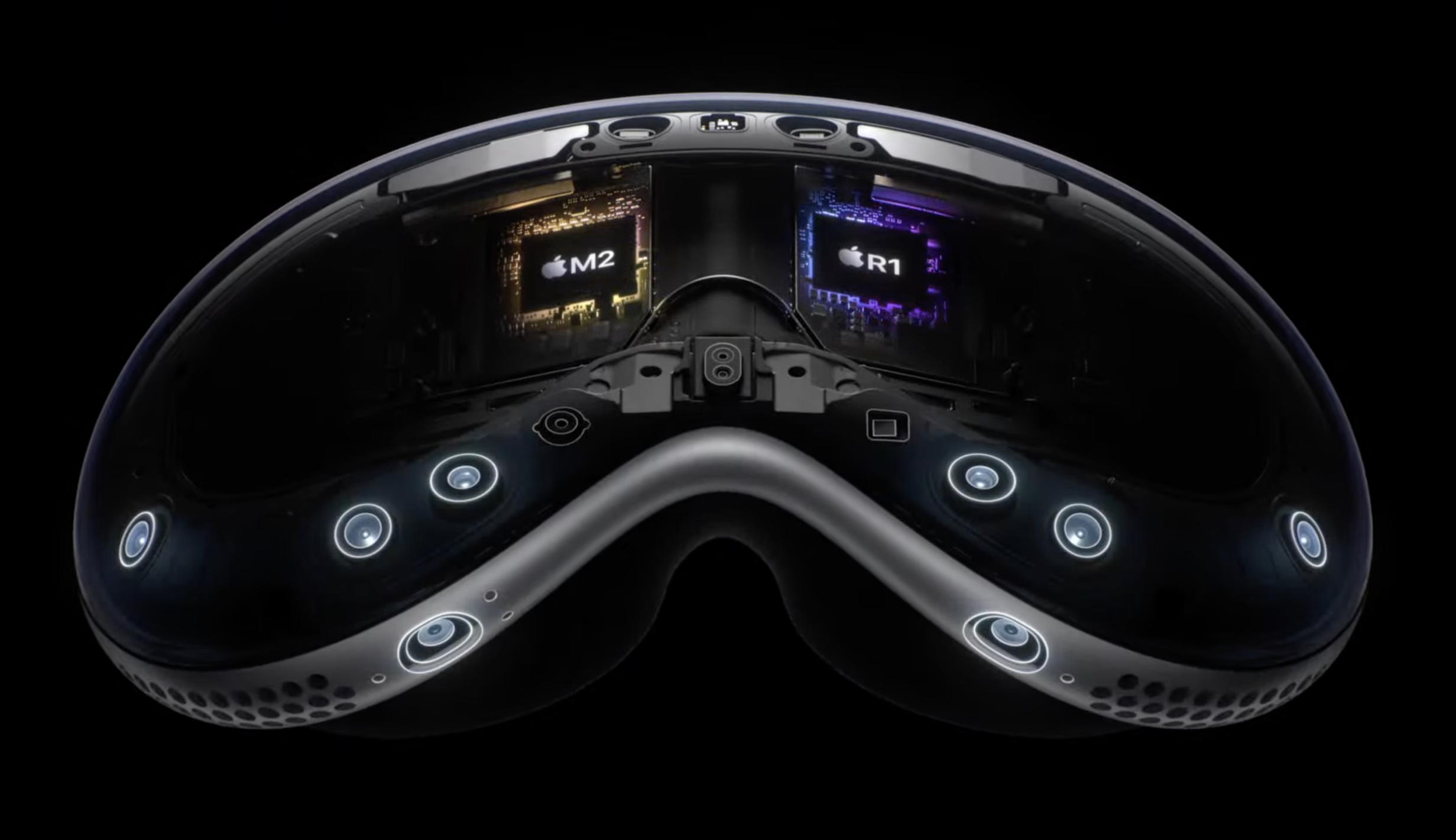
On top of these chips, the Vision Pro has crisp 4K micro-OLED displays – one per eye – that offer roughly 23 million pixels each. According to Apple the Vision Pro’s display fits 64 pixels into the same space that the iPhone’s screen fits one single pixel, and this could eliminate the annoying screen-door effect that affects other VR headsets.
This effect occurs when you’re up close to a screen and you can start to see the gaps between the pixels in the array; the higher the pixel density, the closer you can get before the screen door effect becomes noticeable.
These components will allow you to run an array of Apple software through Apple’s new visionOS platform (not xrOS as was rumored). This includes immersive photos and videos, custom-made Disney Plus experiences, and productivity apps like Keynote.
You’ll also be able to play over 100 Apple Arcade titles on a virtual screen that’s like your own private movie theatre.
We don’t know all of the specs yet, which is where some of the leaks and rumors are filling in the gaps: such as the report that the headset will come with 1TB of storage on board (though other configurations may be available).
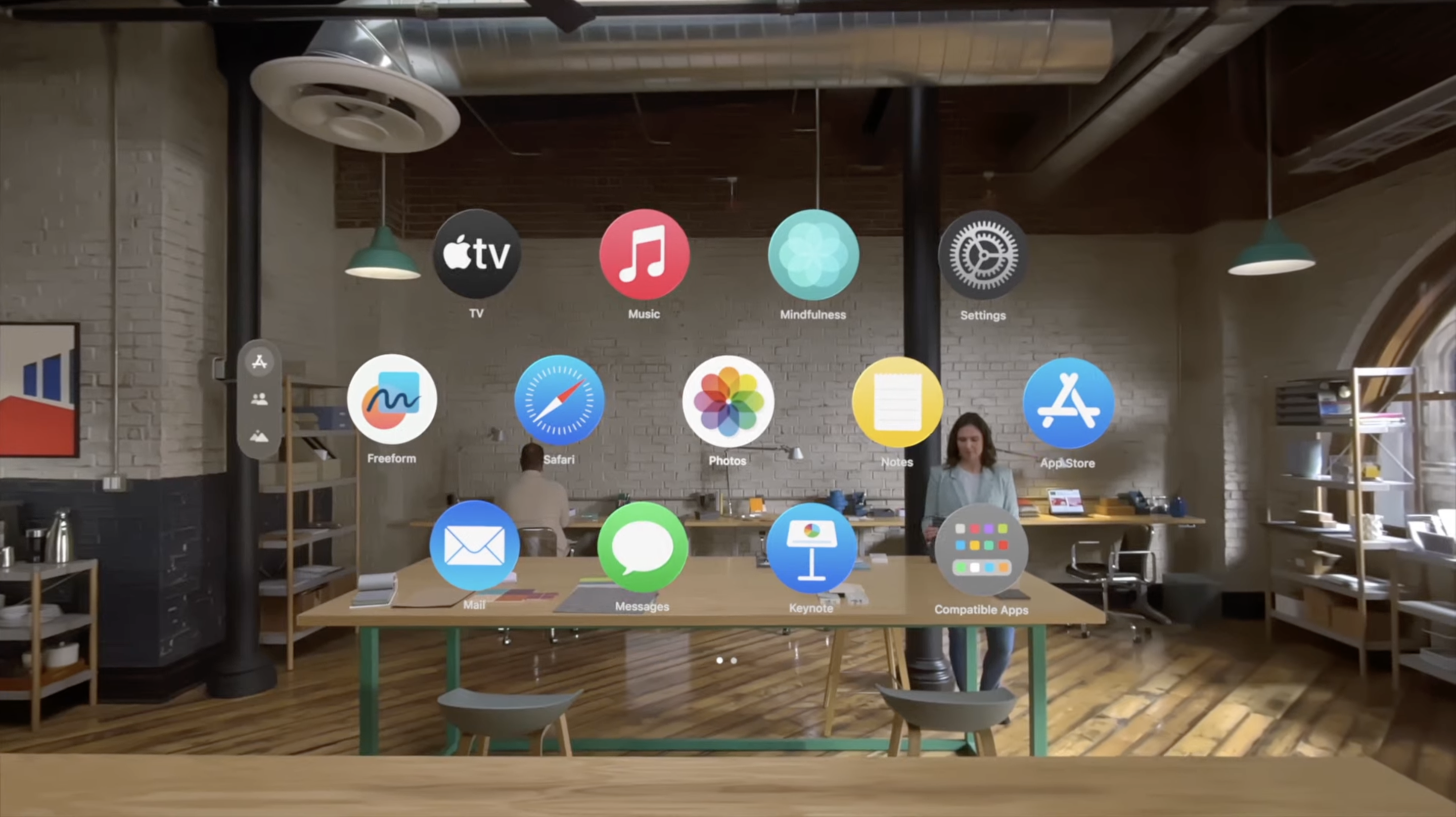
You’ll be able to connect your Vision Pro headset to a Mac via Bluetooth. When using this feature you’ll be able to access your Mac apps and see your screen on a large immersive display, and it’ll sit alongside other Vision Pro apps you’re using. Apple says this setup will help you be more productive than you’ve ever been.
With the power of the M2 chip, Apple’s headset should be able to run most Mac apps natively – Final Cut Pro and Logic Pro recently arrived on M2 iPads. For now, however, Apple hasn’t revealed if these and other apps will be available natively on the Vision Pro, or if you’ll need a Mac to unlock the headset’s full potential. We expect these details will be revealed nearer to the headset’s 2024 launch.
Apple Vision Pro: your questions answered
We’ve answered all of the basic questions about the Apple Vision Pro’s release date, price, specs and more above, but you may understandably still have some more specific or broader ones.
To help, we’ve taken all of the most popular Vision Pro questions from Google and social media and answered them in a nutshell below.
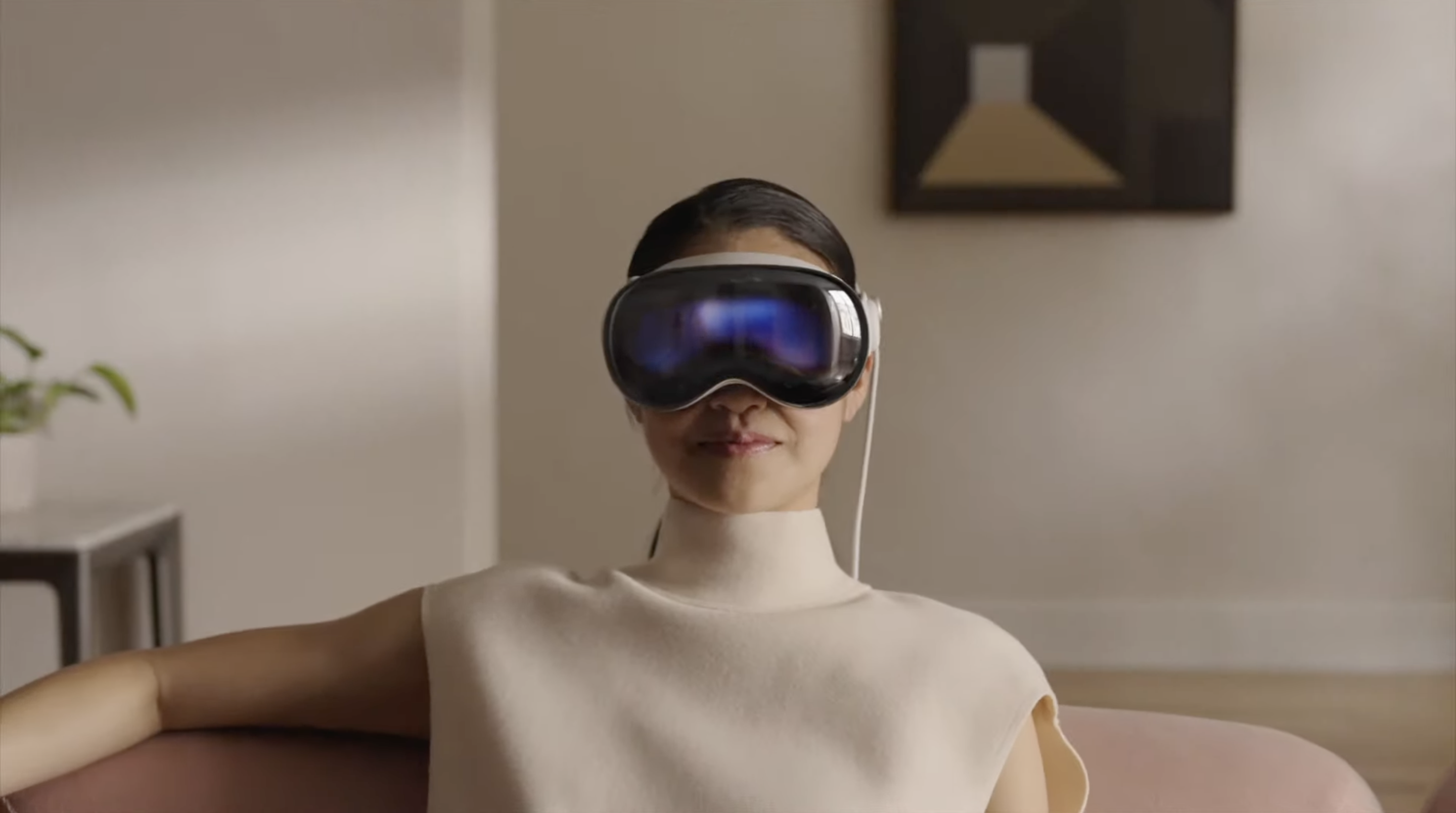
What is the point of Apple Vision Pro?
Apple says that the point of the Vision Pro is to introduce a “new era of spatial computing”. It’s a standalone, wearable computer that aims to deliver new experiences for watching TV, working, reliving digital memories, and remotely collaborating with people in apps like FaceTime.
But it’s still early days. And there arguably isn’t yet a single ‘point’ to the Vision Pro. At launch, it’ll be able to do things like give you a huge, portable monitor for your Apple laptop, or create a home cinematic experience in apps like Disney Plus. However, like the first Apple Watch, it’ll be up to developers and users to define the big new use cases for the Vision Pro.
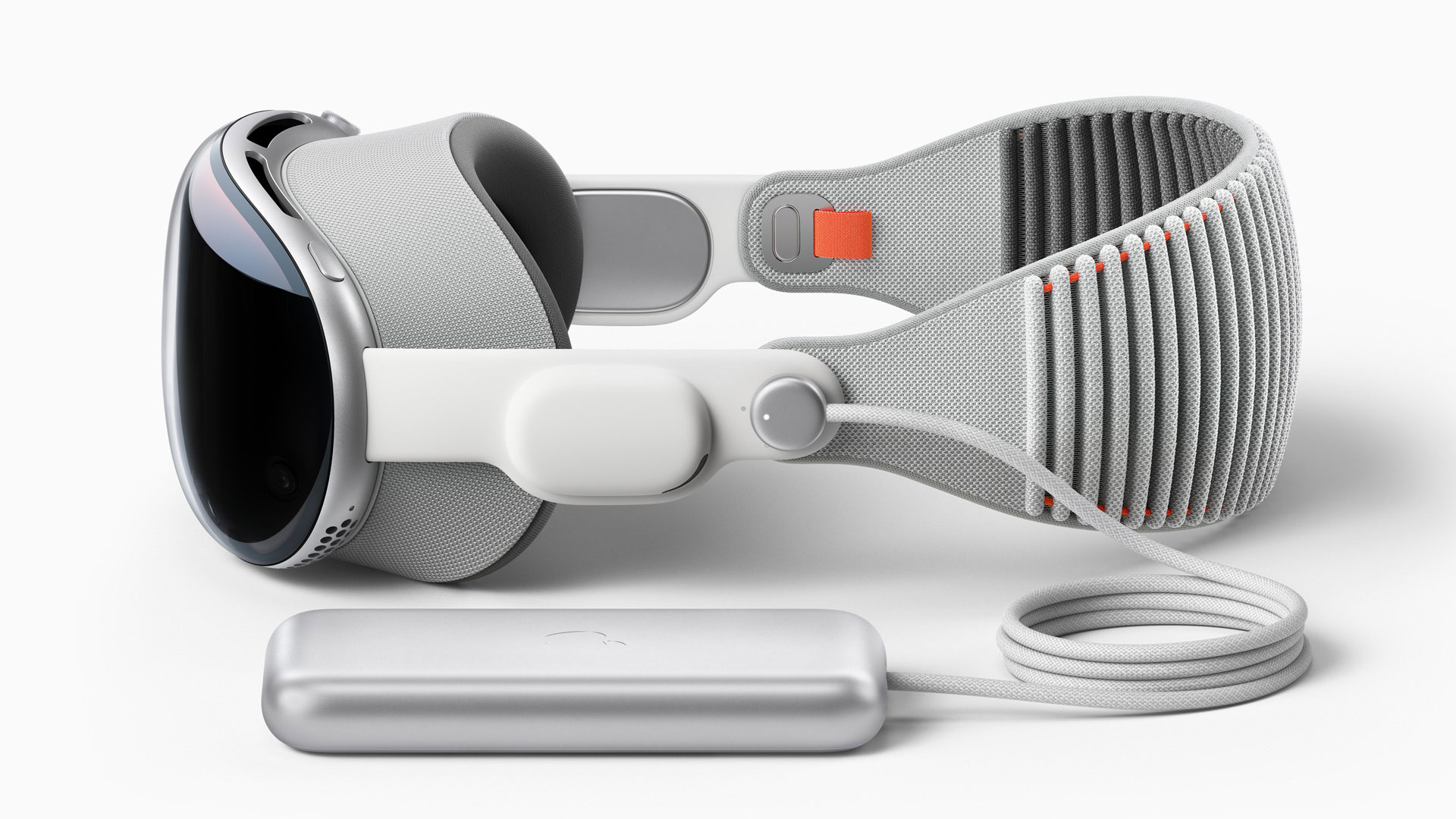
How much does an Apple Vision Pro cost?
The Apple Vision Pro will cost $3,499 when it goes on sale in the US “early next year”. It won’t be available in other countries until “later next year”, but that price converts to around £2,815 / AU$5,290.
This makes the Vision Pro a lot more expensive than rival headsets. The Meta Quest Pro was recently given a price drop to $999 / £999 / AU$1,729. Cheaper and less capable VR-only headsets, like the incoming Meta Quest 3, are also available for $499 / £499 / AU$829. But there is also no direct comparison to the kind of technology offered by the Vision Pro.
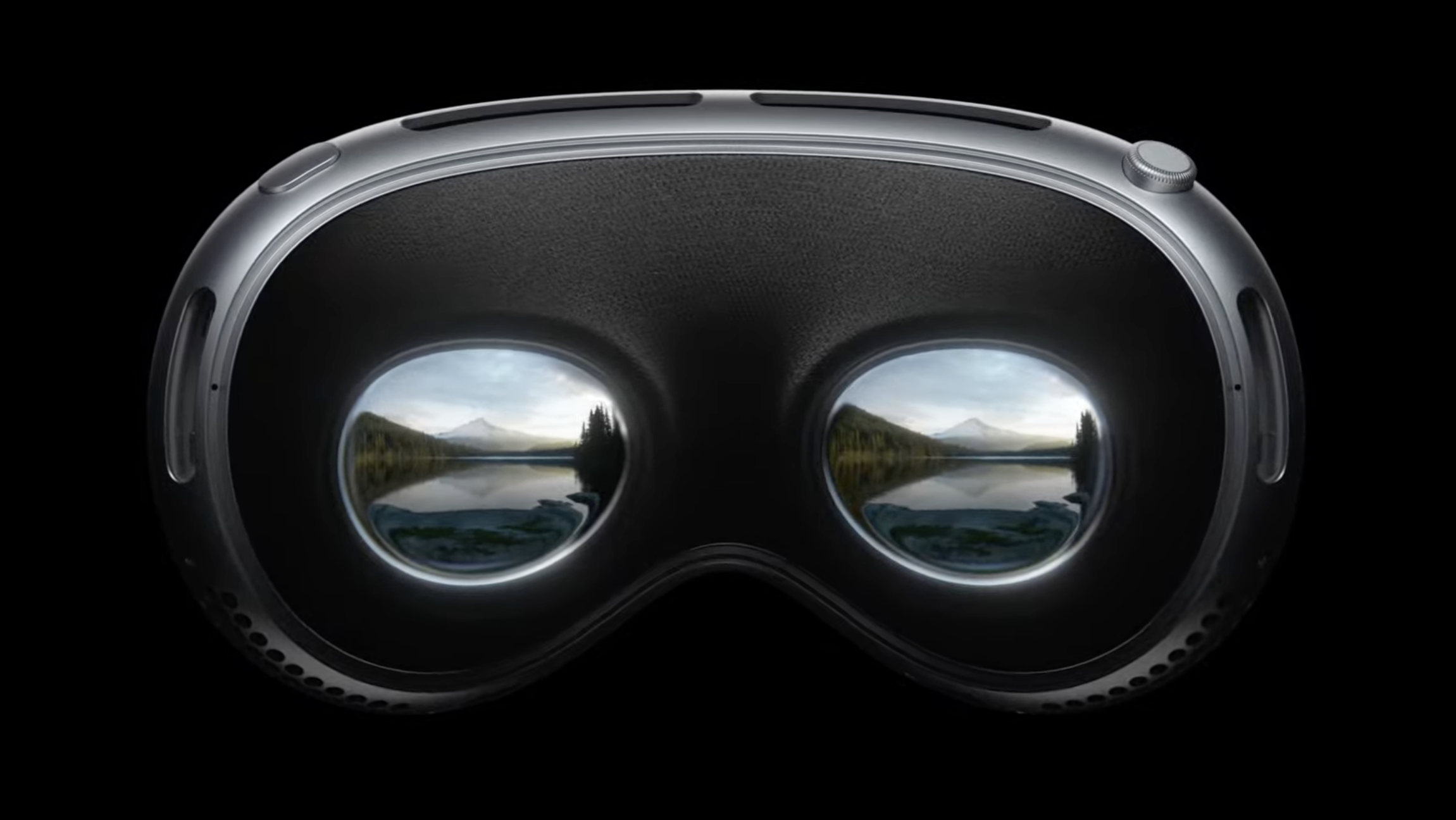
Does Apple Vision Pro work with glasses?
The Apple Vision Pro does work for those who wear glasses, although there are some things to be aware of. If you wear glasses you won’t wear them with the headset. Instead, you’ll need to buy some separate optical inserts that attach magnetically to the Vision Pro’s lenses. Apple hasn’t yet announced the pricing for these, currently only stating that “vision correction accessories are sold separately”.
Apple says it’ll offer a range of vision correction strengths that won’t compromise the display quality or the headset’s eye-tracking performance. But it also warns that “not all prescriptions are supported” and that a “valid prescription is required”. So while the Vision Pro does work well for glasses wearers, there are some potential downsides.
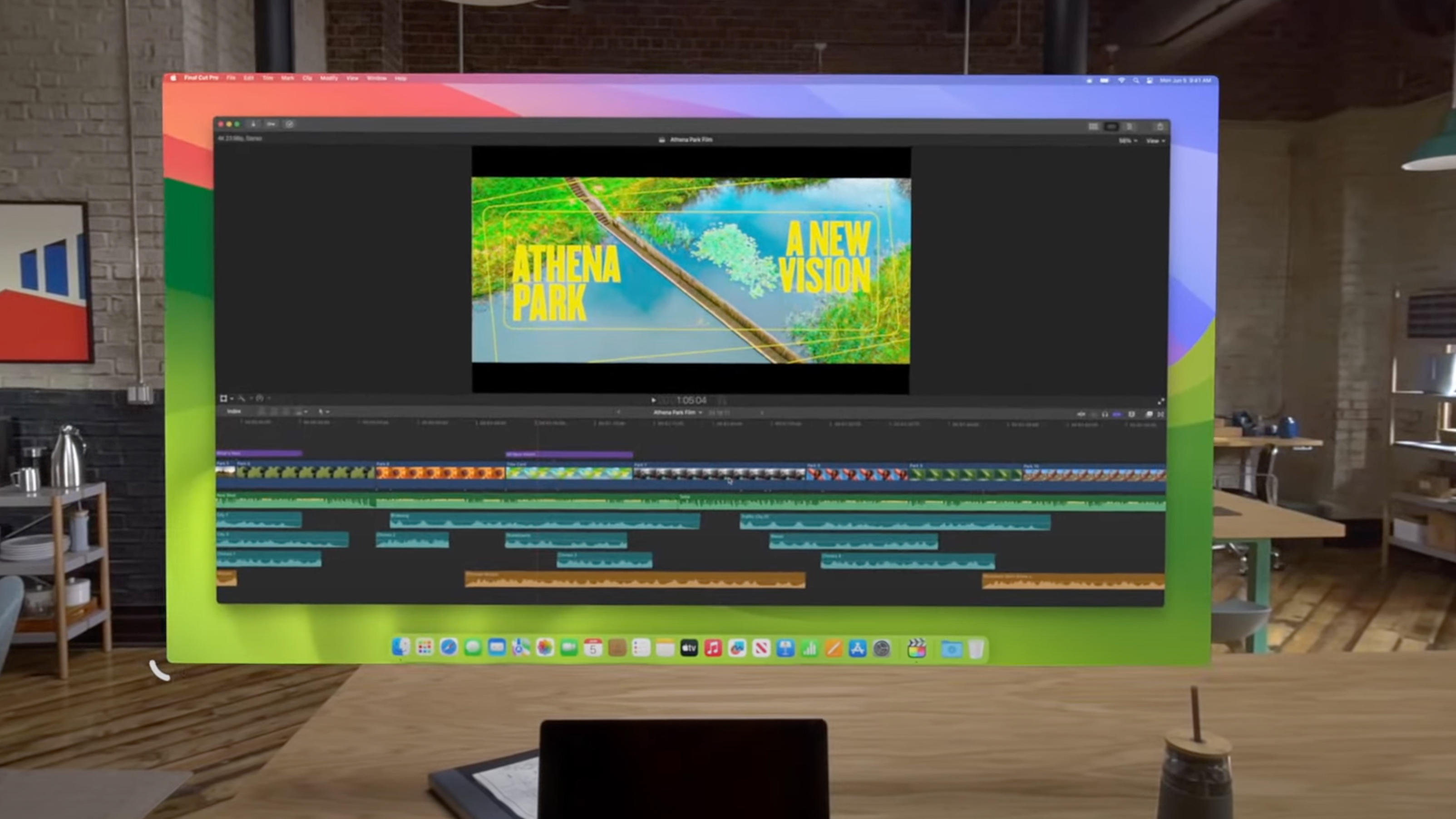
Is Apple Vision Pro a standalone device?
The Apple Vision Pro is a standalone device with its own visionOS operating system and doesn’t need an iPhone or MacBook to run. This is why Apple calls the headset a “spatial computer”.
That said, having an iPhone or MacBook alongside a Vision Pro will bring some benefits. For example, to create a personalized spatial audio profile for the headset’s audio pods, you’ll need an iPhone with a TrueDepth camera.
The Vision Pro will also give MacBook owners a large virtual display that hovers above their real screen, an experience that won’t be available on other laptops. So while you don’t need any other Apple devices to use the Vision Pro, owning other Apple-made tech will help maximize the experience.
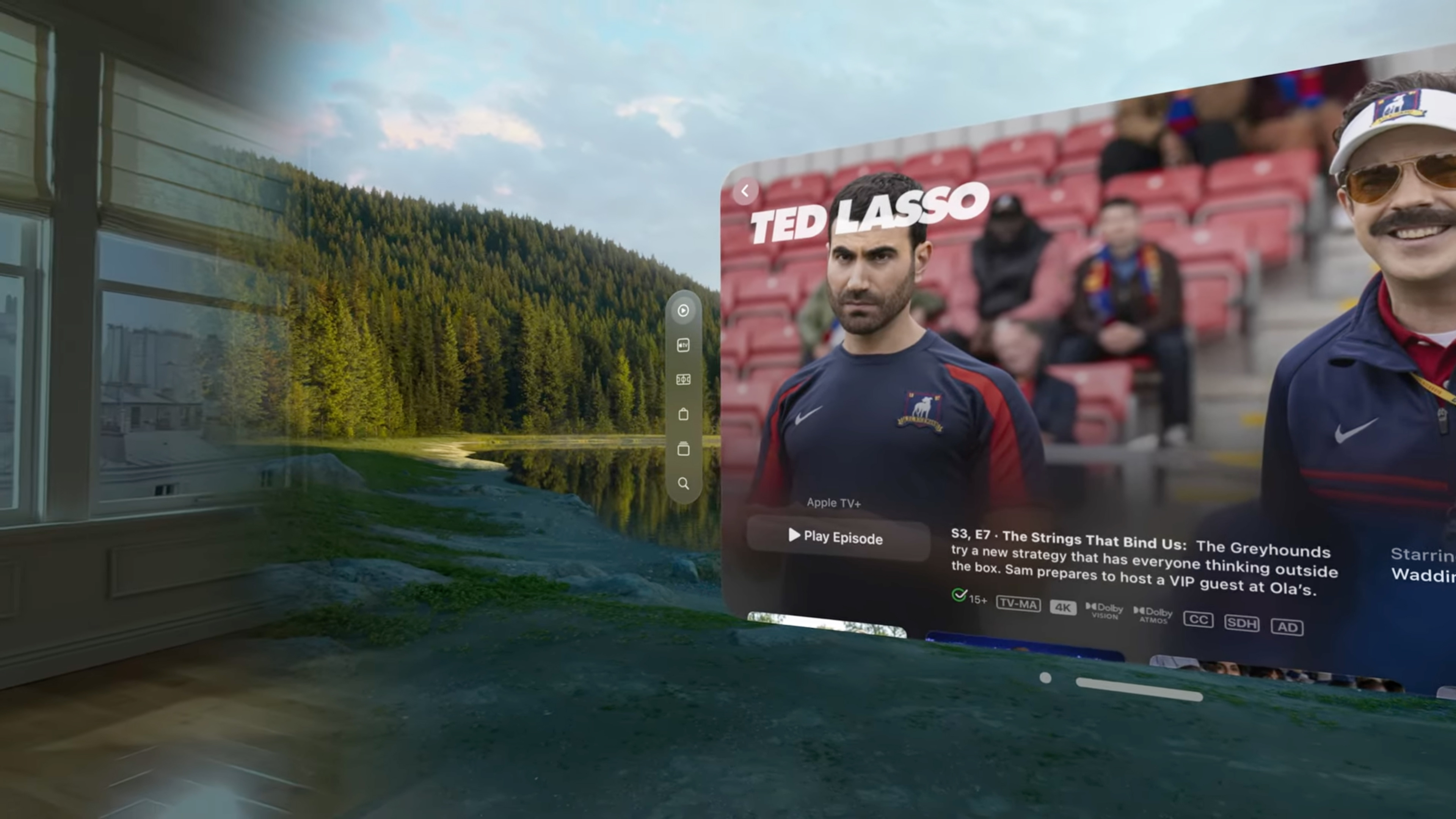
Is Apple Vision Pro VR or AR?
The Apple Vision Pro offers both VR and AR experiences, even if Apple doesn’t use those terms to describe them. Instead, Apple says it creates “spatial experiences” that “blend the digital and physical worlds”. You can control how much you see of both using its Digital Crown on the side.
Turning the Digital Crown lets you control how immersed you are in a particular app. This reveals the real world behind an app’s digital overlays, or extends what Apple calls ‘environments’. These spread across and beyond your physical room, for example giving you a view over a virtual lake.
While some of the examples shown by Apple look like traditional VR, the majority err towards augmented reality, combining your real-world environment (captured by the Vision Pro’s full-color passthrough system) with its digital overlays.
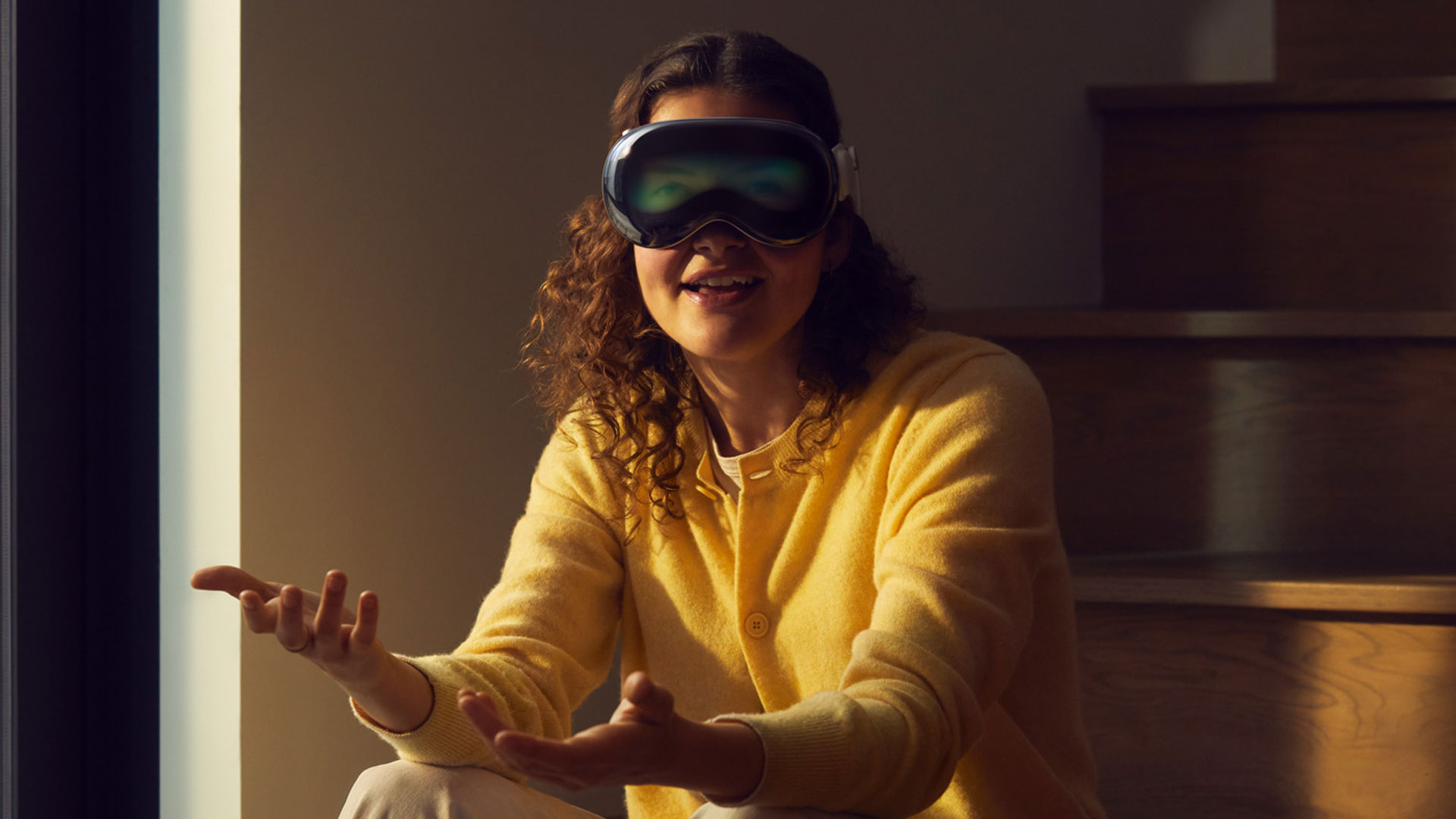
Is Apple Vision Pro see through?
The front of the Apple Vision Pro isn’t see-through or fully transparent, even though a feature called EyeSight creates that impression. The front of the headset is made from laminated glass, but behind that lens is an outward-facing OLED screen.
It’s this screen that will show a real-time view of your eyes (captured by the cameras inside the headset) to the outside world if you’re in augmented reality mode. If you’re enjoying a fully immersive, VR-like experience like watching a movie, this screen will instead show a Siri-like graphic.
To help you look out through the headset, the Apple Vision Pro has a passthrough system that uses cameras on the outside of the goggles to give you a real-time, color feed of your environment. So while the headset feels like it’s see-through, your view of the real world is digital.
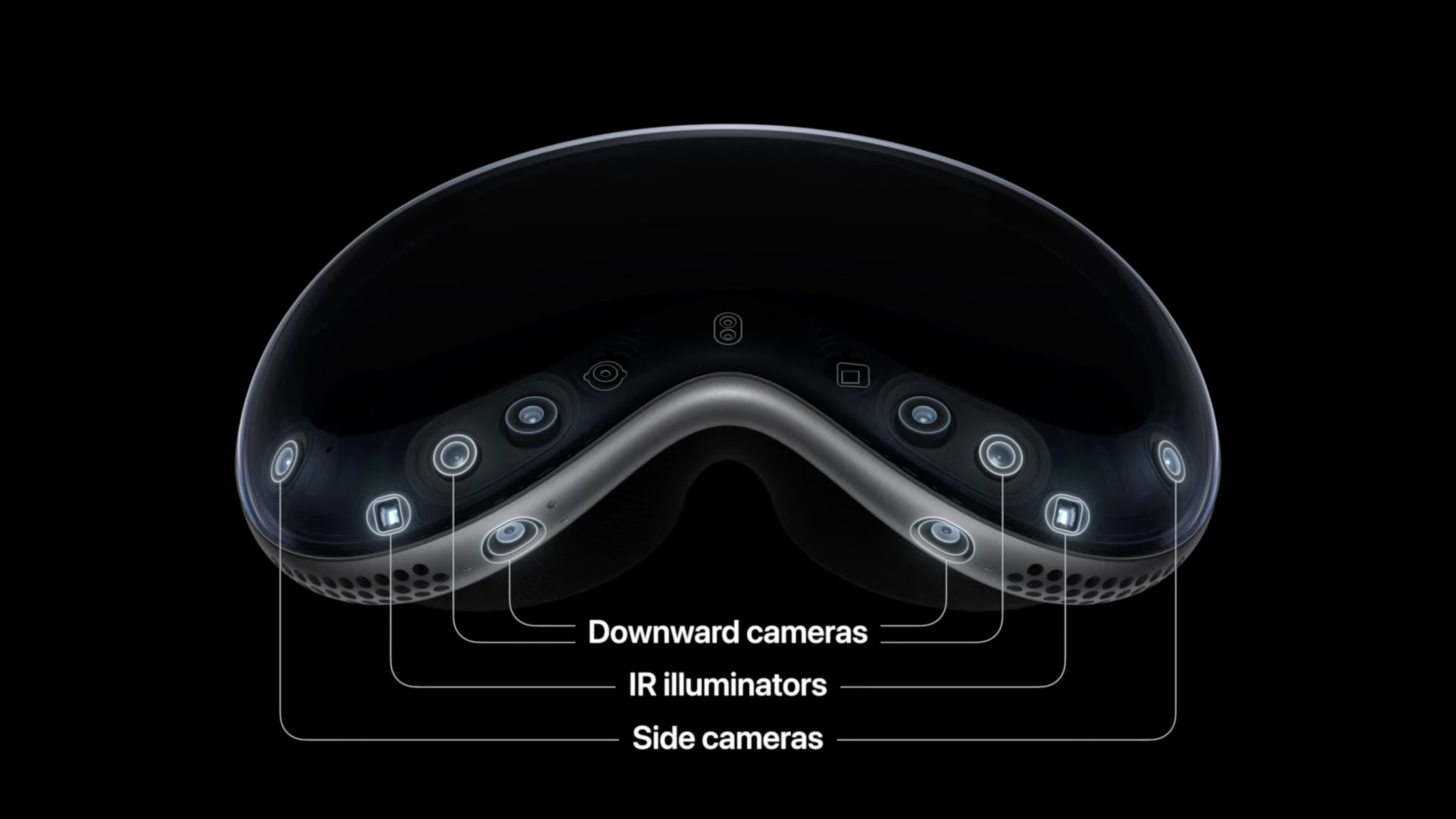
How does Vision Pro work?
The Apple Vision Pro uses a combination of cameras, sensors, and microphones to create a controller-free computing experience that you control using your hands, eyes, and voice.
The headset’s forward-facing cameras capture the real world in front of you, so this can be displayed on its two internal lenses (Apple says these give you “more pixels than a 4K TV for each eye”). The Vision Pro’s side and downward-facing cameras also track your hand movements, so you can control it with your hands – for example, touching your thumb and forefinger together to click.
But the really unique thing about the Vision Pro is its eye-tracking, which is powered by a group of infrared cameras and LED illuminators on the inside of the headset. This mean you can simply look at app icons or even smaller details to highlight them, then use your fingers or voice to type.
- Check out the competition, Meta’s recently unveiled the Meta Quest 3
stereoguide-referencehometheater-techradar